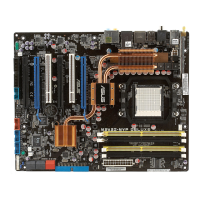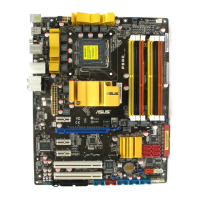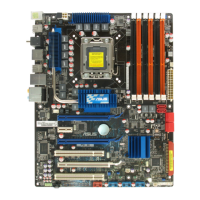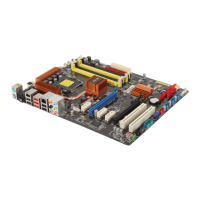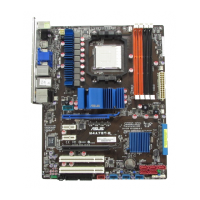5-26 Chapter 5: Software support
5.4 RAID congurations
The motherboard comes with the AMD
®
SB600 Southbridge RAID controller that
allows you to congure Serial ATA hard disk drives as RAID sets. The motherboard
supports the following RAID congurations.
RAID 0
(Data striping) optimizes two identical hard disk drives to read and write
data in parallel, interleaved stacks. Two hard disks perform the same work as a
single drive but at a sustained data transfer rate, double that of a single disk alone,
thus improving data access and storage. Use of two new identical hard disk drives
is required for this setup.
RAID 1
(Data mirroring) copies and maintains an identical image of data from one
drive to a second drive. If one drive fails, the disk array management software
directs all applications to the surviving drive as it contains a complete copy of
the data in the other drive. This RAID conguration provides data protection and
increases fault tolerance to the entire system. Use two new drives or use an
existing drive and a new drive for this setup. The new drive must be of the same
size or larger than the existing drive.
RAID 0+1
is data striping and data mirroring combined without parity (redundancy
data) having to be calculated and written. With the RAID 0+1 conguration you get
all the benets of both RAID 0 and RAID 1 congurations. Use four new hard disk
drives or use an existing drive and three new drives for this setup. (For NF-590 SLI
only)
5.4.1 Installing hard disks
The motherboard supports Serial ATA hard disk drives. For optimal performance,
install identical drives of the same model and capacity when creating a disk array.
Installing Serial ATA (SATA) hard disks
To install the SATA hard disks for a RAID conguration:
1. Install the SATA hard disks into the drive bays.
2. Connect the SATA signal cables.
3. Connect a SATA power cable to the power connector on each drive.
Refer to the RAID controllers user manual in the motherboard support CD for
detailed information on RAID congurations. See section
5.2.5 Manual menu
.
If you want to boot the system from a hard disk drive included in a RAID set,
copy rst the RAID driver from the support CD to a oppy disk before you install
an operating system to a selected hard disk drive. Refer to section
5.6 Creating
a RAID driver disk
for details.
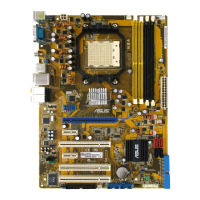
